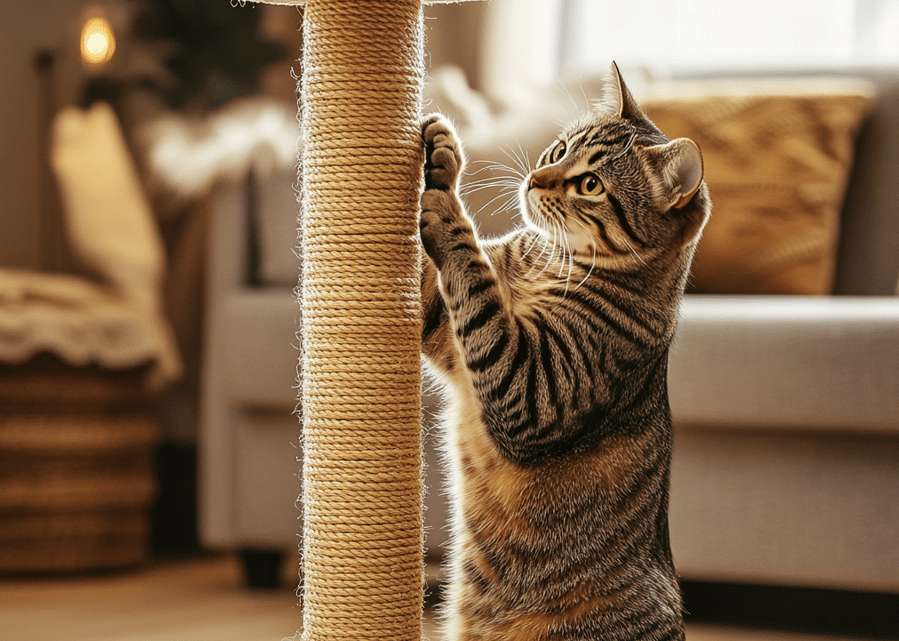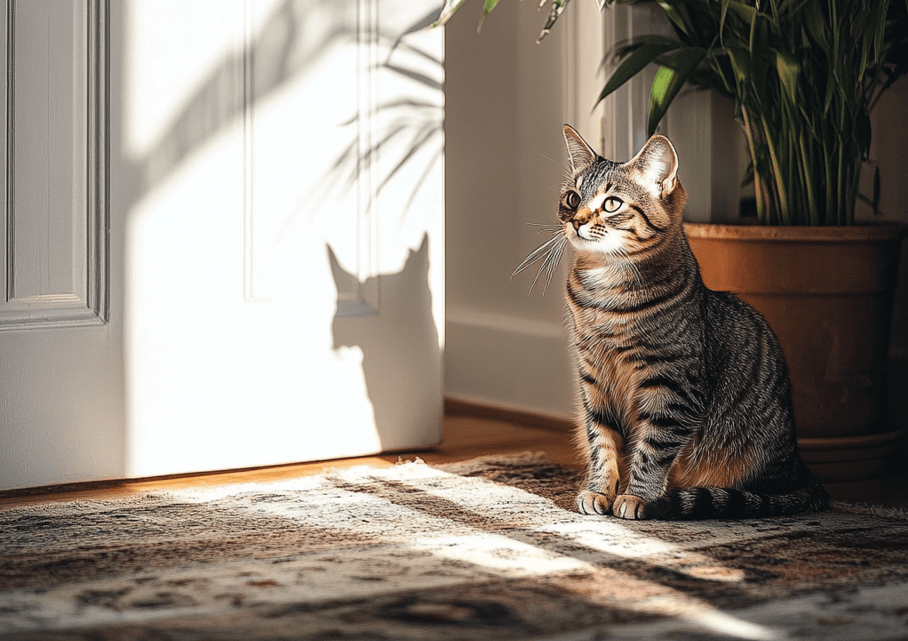
Cats are independent, intelligent creatures with minds of their own. Unlike dogs, they don’t respond well to punishment—yelling, spraying water, or physical corrections often backfire, leading to fear, aggression, or avoidance. So, how do you discipline a cat without punishment while maintaining a loving bond? The key lies in understanding their instincts and using positive, stress-free methods that encourage good behavior.
This guide explores how to discipline a cat without punishment using science-backed, feline-friendly techniques. From redirecting unwanted behaviors to reinforcing positive habits, you’ll discover gentle yet effective ways to guide your cat’s actions without causing stress or mistrust.
By the end of this article, you’ll learn:
- Why punishment doesn’t work on cats and what to do instead
- How to use redirection and environmental adjustments to discourage bad habits
- The power of positive reinforcement in shaping feline behavior
- Ways to establish boundaries without fear or intimidation
- How to handle common issues like scratching, biting, and furniture destruction
Let’s dive into these stress-free methods that strengthen your bond with your cat while encouraging better behavior.
1.Understanding Feline Psychology: Why Punishment Fails

Cats operate on a completely different wavelength than dogs when it comes to discipline. While dogs may associate punishment with their actions, cats typically link negative experiences directly to the person administering them rather than their own behavior. This means that when you scold or spray your cat for scratching furniture, they don’t think, “I shouldn’t scratch here.” Instead, they learn to fear or avoid you, which can lead to increased stress, anxiety, and even aggressive behaviors like biting or spraying. Scientific studies on feline behavior confirm that cats respond far better to positive reinforcement than punishment. By focusing on rewarding desirable actions and redirecting unwanted ones, you create a learning environment based on trust rather than fear.
2. The Power of Redirection: Channeling Natural Instincts
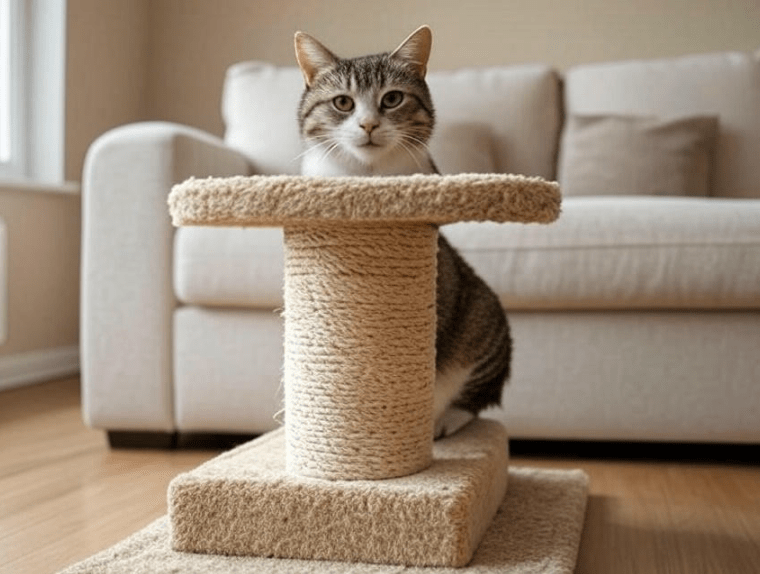
One of the most effective ways to discipline a cat without punishment is through strategic redirection. Cats have natural instincts to scratch, climb, hunt, and explore—behaviors that often lead to household mischief when not properly directed. Rather than punishing your cat for scratching your sofa, provide an appealing alternative like a sturdy scratching post placed near their favorite destruction spot. Sprinkle it with catnip or use interactive toys to make it more enticing than your furniture. The same principle applies to other unwanted behaviors. If your cat bites during play, immediately stop the interaction and offer an appropriate toy they can sink their teeth into. Over time, this method teaches cats where and how to express their natural behaviors appropriately without any negative associations.
3.Positive Reinforcement: Rewarding Good Behavior

Positive reinforcement is the cornerstone of effective cat discipline. This scientifically-backed method works by immediately rewarding desired behaviors, making your cat more likely to repeat them. When your cat uses their scratching post instead of your couch, offer a small treat, affectionate praise, or a brief play session with their favorite toy. The timing is crucial—the reward must come within seconds of the good behavior to create a clear connection in your cat’s mind. Studies in animal behavior show that cats learn faster through positive reinforcement than through any form of punishment. Keep treats small and healthy to avoid weight gain, and vary the rewards to maintain your cat’s interest. This approach not only corrects behavior but also strengthens your bond as your cat associates you with pleasant experiences rather than fear or stress.
4.Environmental Enrichment: Preventing Problems Before They Start

Many behavioral issues stem from boredom or unmet instinctual needs. A cat without proper stimulation will inevitably find their own entertainment, often in ways that damage your home. Comprehensive environmental enrichment provides acceptable outlets for your cat’s natural behaviors, significantly reducing the likelihood of unwanted actions. Install multiple scratching posts in different textures (sisal, cardboard, carpet) to satisfy scratching urges. Create vertical territory with cat trees, shelves, or window perches for climbing and surveying their domain. Rotate interactive toys to prevent boredom, and consider puzzle feeders to engage their hunting instincts during mealtime. By meeting your cat’s physical and mental needs proactively, you eliminate the root causes of many common behavior problems before they ever arise.
5.Consistency and Routine: The Framework for Good Behavior
Cats are creatures of habit who thrive on predictability. Inconsistent responses to their behavior create confusion, while a stable routine provides security and reduces stress-related acting out. Establish and maintain consistent rules—if jumping on counters is unacceptable, everyone in the household must enforce this uniformly. Create a daily schedule for feeding, play sessions, and quiet time that aligns with your cat’s natural rhythms. Regular playtimes, especially before meals, mimic the natural hunt-eat-groom-sleep cycle and help burn excess energy that might otherwise go into destructive behaviors. A predictable routine helps cats understand what’s expected of them and when, significantly reducing anxiety-driven misbehavior like excessive meowing or attention-seeking antics.
6.Non-Threatening Deterrents: Discouraging Unwanted Actions
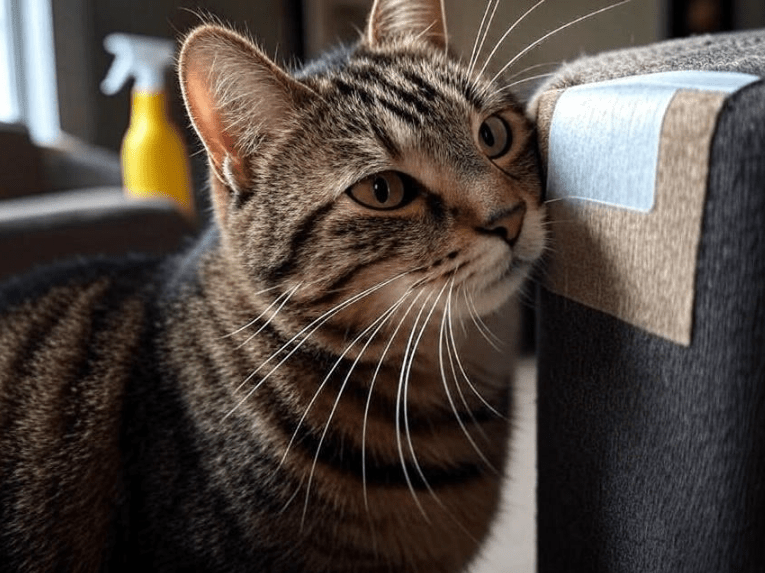
When redirection isn’t immediately effective, harmless deterrents can help discourage undesirable behaviors without causing fear. These methods work by making forbidden areas or objects unappealing to your cat. Sticky paws double-sided tape placed on furniture arms deters scratching—cats dislike the tacky sensation on their paws. Aluminum foil or plastic carpet runners with the nubby side up can keep cats off counters or furniture. Motion-activated compressed air devices deliver a startling but harmless puff of air when cats approach restricted zones. Citrus-scented sprays (using cat-safe essential oil dilutions) can mark no-go areas since most felines dislike citrus aromas. The key is using these deterrents consistently while always providing attractive alternatives, creating a clear message about where certain behaviors are appropriate without any negative emotional fallout.
7.Strategic Ignoring: Extinguishing Attention-Seeking Behaviors
Some behaviors—like excessive meowing, pawing at your face, or knocking objects off tables—are purely attention-seeking tactics. While these actions can be frustrating, reacting with any attention (even negative) reinforces the behavior. The most effective approach is strategic ignoring: completely withdrawing all attention the moment the unwanted behavior begins. Turn away, leave the room if necessary, and only re-engage when your cat is calm. This teaches them that polite behavior earns your attention while demanding actions get them nowhere. It’s crucial that all household members follow this approach consistently, as even occasional reinforcement can maintain the unwanted behavior. For particularly persistent cases, combine ignoring with rewarding alternative calm behaviors to speed up the learning process.
8.Play Therapy: Meeting Physical and Emotional Needs
Regular, structured play sessions serve multiple disciplinary purposes. They provide appropriate outlets for predatory energy that might otherwise manifest as aggression or destructive behavior. They strengthen the bond between you and your cat, making them more receptive to guidance. They also serve as positive reinforcement when timed correctly after good behavior. Use interactive toys like feather wands or laser pointers to engage your cat in vigorous daily play sessions that mimic hunting sequences—short bursts of intense activity followed by rest periods. Always end with a tangible “catch” (a toy they can physically grab) to provide satisfaction. For solo play, leave out puzzle feeders or food-dispensing toys that challenge their mind and body. A well-exercised cat is far less likely to develop behavior problems rooted in pent-up energy or frustration.
9.Clicker Training: Precise Communication for Better Behavior
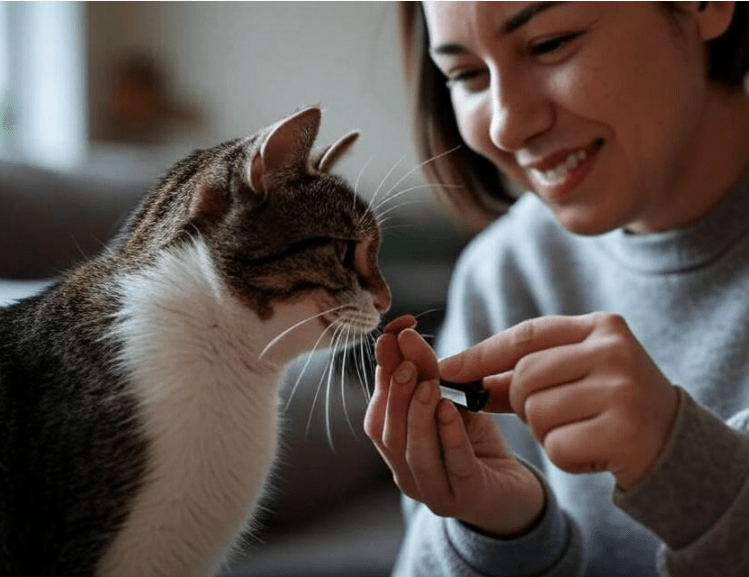
Clicker training isn’t just for dogs—cats can learn remarkably well with this positive reinforcement method. The click sound acts as an exact marker that tells your cat the precise moment they’ve done something right, followed immediately by a reward. Start with simple commands like “sit” or targeting (touching their nose to an object), then gradually shape more complex behaviors. Clicker training helps address specific discipline challenges by giving you a clear way to communicate what you want. For example, you can click and reward for using the scratching post instead of furniture, or for staying calmly on the floor when you’re preparing food. This method builds confidence and strengthens your cat’s ability to make good choices independently.
10.Patience and Observation: The Keys to Long-Term Success
Successful cat discipline requires understanding that behavior change happens gradually. Each cat learns at their own pace, and setbacks are normal. Careful observation helps you identify triggers for unwanted behavior—is your cat scratching the door at dawn because they’re hungry? Biting ankles when you walk by because they want playtime? Addressing the root cause is more effective than just treating symptoms. Keep a behavior log if needed, noting when problems occur and what happened beforehand. This detective work helps you modify your approach for better results. Most importantly, maintain realistic expectations. Some behaviors may never disappear completely but can be managed to acceptable levels. Celebrate small victories, stay consistent with your chosen methods, and remember that the goal isn’t perfect obedience but mutual understanding and harmony in your shared home.
By implementing these ten methods with patience and consistency, you’ll create an environment where your cat naturally chooses good behaviors because they’re rewarding and fulfilling, not because they’re afraid of punishment. This approach leads to a happier, better-behaved feline companion and a stronger, more trusting relationship between you both.
Final Thoughts

Disciplining a cat without punishment isn’t about control—it’s about communication. By using positive reinforcement, redirection, and environmental enrichment, you can guide your cat’s behavior while strengthening your bond. Remember, patience and consistency are essential. Over time, your cat will learn the rules of the house—not out of fear, but out of trust and mutual respect.
Now that you know how to discipline a cat without punishment, you’re equipped to foster a happier, better-behaved feline companion. Which method will you try first?

